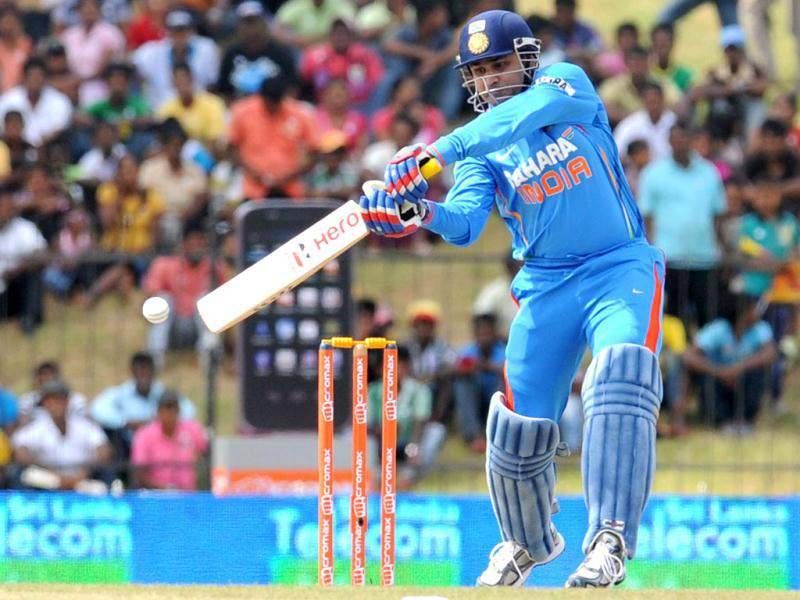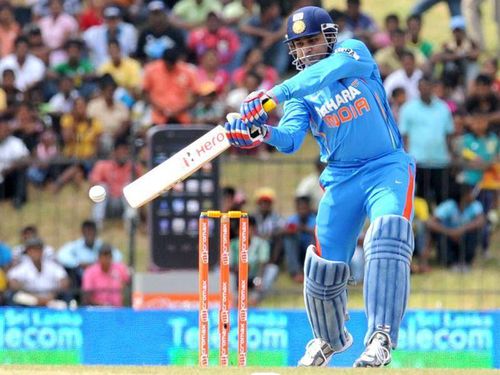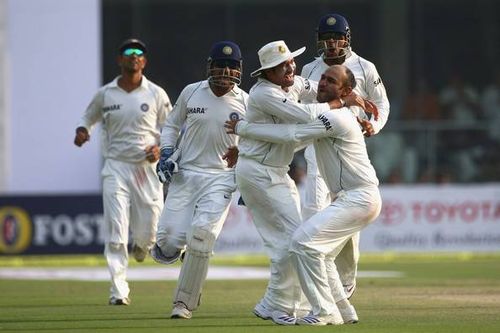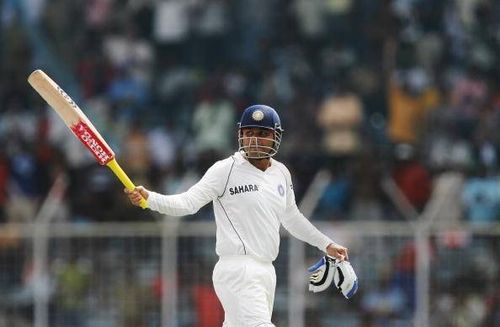
Virender Sehwag - The batsman who made brutality look beautiful

Virender Sehwag’s exquisite shot-range was a treat to the eyes
As the saying goes, “Some people hear their own inner voices with great clearness. And they live by what they hear. Such people either become crazy... or they become legend.” One such crazy legend who dared to change the very gospels of the modern-day cricketing game was Virender Sehwag. With a pure heart and a devilish bat, Virender Sehwag proved himself to be one of the most dangerous batsmen the cricket world had ever seen.
From his initial days at school, he wanted to carry forward his father’s flour-mill business onto the cricketing field. Crushing and grinding bowlers with his majestic batting. Such was the dedication of this enthusiastic cricketer, that he travelled, sometimes pedaled, almost 84 km everyday to practice his favorite sport. As a precocious teenager, he played with ultimate audacity and swagger, a personality trait you normally associate with people coming from that part of the country.
After a string of superlative performances in domestic cricket, Sehwag earned his maiden call-up to the Indian national team in April 1999. He had a decent start to his International career both in ODIs and Tests playing as a utility player who could contribute equally with bat and ball. In what would turn out to be a path-breaking decision for Indian cricket, he transformed himself from a dour middle-order batsman to a swashbuckling opener against New Zealand in 2001. There was no holding back for Sehwag after that and the rest, as they say, is history.
The revolutionary opener
When he burst onto the scene as an opener, not many cricketing pundits believed that the flashy, freewheeling batsman would last long at this critical position especially with his ‘see-ball-hit-ball’ approach. But, he was destined to prove everybody wrong. He seamlessly carried forward Sanath Jayasuriya’s legacy of being a marauding opening-batsman in ODIs to all three formats of the game. Even with his limited foot movement and unorthodox technique, he was instrumental in revolutionizing opening batting in Test cricket.
He particularly relished the prospects of an attacking field-setting in the longest format and banked on his sublime hand-eye coordination to dominate the bowlers. But the cardinal difference in Sehwag was how he saw the game, with an absolute clear, uncluttered mind. No matter what the situation of the match was, the hard-hitting batsman often succeeded in finding the largest gap on the cricketing field, the one over the fielder’s head.
His sheer confidence and utmost self-belief made him the fourth highest run-getter among opening-batsmen in Test cricket. Only Sunil Gavaskar, Graeme Smith and Matthew Hayden have scored more runs than him.
The one-stop winning formula
The pre Virender Sehwag era saw the Indian team emerge as a decent outfit in the shorter format of the game. However, the Test arena, especially overseas, was always an unconquered territory for the Indians. Although the team then boasted of the strongest Indian batting quartet ever, viz. Sachin Tendulkar, Rahul Dravid, Saurav Ganguly and VVS Laxman, it still lacked a potent thrust that could lead them to that elusive win.
It is in that context, India must feel indebted to Virender Sehwag for ushering in a winning-a-match culture into the Indian team as opposed to saving-a-match culture that was prevalent at that time. His unparalleled ability to score big & fast, irrespective of the opposition, situation or conditions, helped India win more Test matches and achieve the no.1 Test ranking for the first time ever in 2009.
Even in the ODI format, his indispensability to the Indian squad is well proven from the fact that India won 79% of its matches when he scored a half-century. He also emerged as India’s biggest impact batsman and a vital weapon in MS Dhoni’s arsenal that lifted the World Cup in 2011.

The ultimate fear factor
Talking to Harsha Bhogle, Sehwag once said, “The batsman is always scared. But the bowler must be too. He must also think, if I bowl a bad ball where will Sehwag hit me!” He was perhaps being as nonchalant in his talking as he was while batting. But this nonchalance and composure at the crease was well complimented by his power and brutality, which was sufficient to send chills down the spine of any opposition bowler.
There was a method in all this madness too. He picked his favorite bowler, ball and situation well in advance and met them with little disdain. He played with the minds of the bowlers and instilled fear in their hearts.
The biggest testimony to this fact was his ferocious batting against Umar Gul in the semi-final of 2011 World Cup. Gul was Pakistan’s best bowler in the World Cup with 14 wickets and a miserly economy rate of 3.86. Sehwag smashed 5 fours in his second over which led to the bowler losing all his rhythm and ended up wicket-less conceding 69 runs in 8 overs.
India’s record machine
For a man who played his cricket in the most uncomplicated way, the numbers just happened. With a smile and a song on his lips, Virender Sehwag broke almost every cricketing record that came his way. Apart from all the records he holds for his fast-scoring capabilities, the one which is most cherishing is India’s highest Test score of 319 which he made against South Africa in 2008. In fact, the top three individual scores in Test cricket for India belong to this man.

He was no muck with the ball either. He is the only person in Test history to hit two triple centuries and take five wickets in a Test innings. He is also one of the very few players who have scored a double century in limited-overs cricket, having scored 219 (highest ODI score at that time) against West Indies in 2011.
The man himself neither liked chasing records nor was he happy to talk about them. After getting out on 293, 7 runs short of what would have been a record-breaking third triple century, Sehwag had an astounding yet eloquent response, "I am very happy I got 293 runs. I am proud of what I have achieved. Not many people have got two triple centuries and followed that with 293. So there is nothing to be disappointed about." This showed the simplistic nature of the man towards his life and cricket.
Now, with the runs drying up and those eyes & hands not moving as swiftly as they used to, the legend is at the crossroads of his illustrious career. He still has the desire to play for his country and win the hearts of millions of his fans. But for all that it’s worth, even the great man knows it’s easier said than done. As much as I keep reminding myself that this is not a retirement tribute, a part of me realizes that we may not see him again.
For years and years, Virender Sehwag was a joy to behold. He kept us on the edge of our seats, dishing out a new thriller every time he came out to bat. But now, the entertainment is about to get over. The movie is in its very climax, perhaps an anti-climax of sorts.
And how badly we wish for a happy ending to this story, one last hurrah, a last chance for the ‘Najafgarh Ka Nawab’ to bow out of this beautiful game with all the respect and honor he deserves.